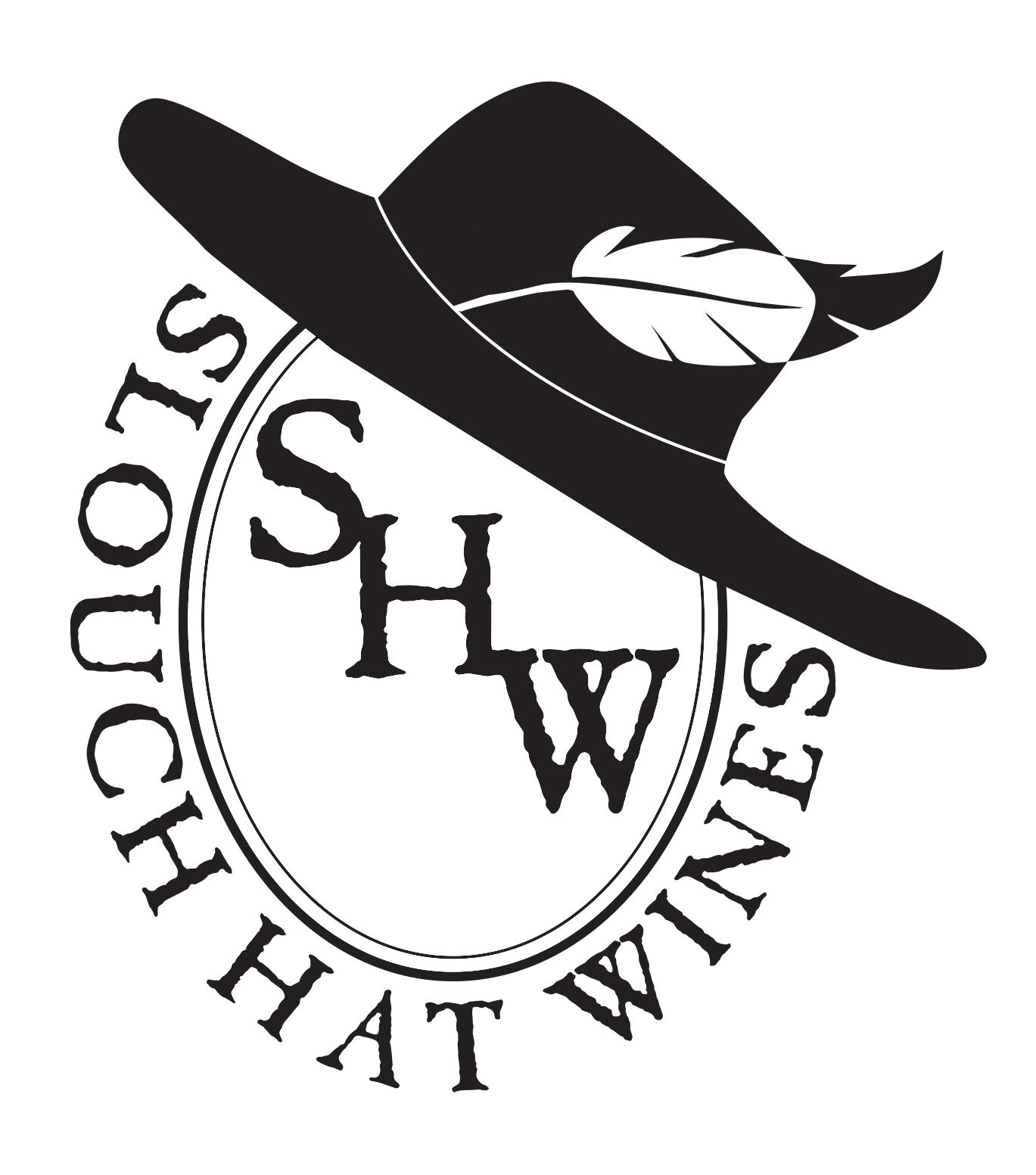Tails from the Trellis - The Climate of Santa Ynez Valley
Howdy! Slouch Hat Wines’ Chief Field Correspondent, Po’Boy Fowler, back again. It’s the rainy season here in the Santa Ynez Valley (yes, we have a “rainy” season in California). This year it is actually raining a lot, which should greatly help the vineyards for the 2023 vintage. However, the rainy weather has me missing the constant sunshine and perfect temperatures that we have most of the year. In homage of that beautiful weather, I decided to focus this blog on the Santa Ynez Valley’s climate and why it is perfect for growing grapes – and not only one or two specific varietals like many places in the world, but multiple varietals specific to different parts of the valley.
Let’s go back to junior high geography class for a bit. If you look at the coast of California, you’ll notice a prominent left hook above Los Angeles. This hook follows the path of the San Andres Fault, which gives this section of California two pacific coastlines – one to the west and one to the south. However, it is a different fault line that makes this area perfect for growing grapes.
Over the years (millions and millions of years) the Santa Ynez Fault formed to the west of the San Andres Fault running towards the coast. The Santa Ynez Mountains formed on the southern side of the Santa Ynez Fault and run west to east - yep, west to east. This mountain range created a barrier between the Santa Ynez Valley and the pacific coastline to the south. The northern border of the valley is made up by the Purisima Hills and the San Rafael Mountains. The San Rafael Mountains run west to east as well, while the Purisima Hills run generally northwest to southeast. All of this creates a funnel shaped valley that opens as you near the Pacific Ocean on the western coastline.
Fun Fact: The Santa Ynez and San Rafael Mountains are a part of the Transverse Mountain Ranges. These mountain ranges are the only ranges on the coast of North and South America that run west to east rather than north to south.
Why does a funnel shaped valley matter? This geographic formation allows the cool maritime wind from the Pacific Ocean to flow through the valley without being blocked by a normal north-south mountain range. This makes the Santa Ynez Valley AVA the coolest winegrowing region in California even though it is one of the most southern. So, if you visit in the summer bring a light jacket because it can be over 80 degrees during the day and 50 degrees at night and as you move east to west or west to east the temperatures can change dramatically in the small valley.
Fun Fact: On a typical day as you drive east from Lompoc to Los Olivos the temperature will increase one degree for every mile you drive because of the lessening of the maritime influences.
The chill of the Pacific Ocean makes the western end of the valley (the coolest) perfect for growing Pinot Noir and Chardonnay. This section of the valley has been designated the Sta. Rita Hills AVA. As you move inland and the valley begins to warm, Rhone Varietals and Sauvignon Blanc thrive, especially in the Ballard Canyon AVA. This is where Slouch Hat Wines grows its grapes for As You Were Sauvignon Blanc and Parade Rest Grenache, Syrah, Mourvèdre (GSM). Even further inland the maritime influence has practically disappeared, and you find the Happy Canyon AVA where Bordeaux varietals (i.e., Cabernet Sauvignon and Merlot) grow extraordinarily well. The west to east orientation of the Valley paired with the cool maritime winds of the Pacific Ocean creates a situation where world class varietals can grow and thrive, and humans can slouch back and relax.
Credit: Wine Folly
Climate is just one factor when considering a region’s wine growing capabilities, though. Obviously, the land must also be exceptionally fertile for so many vineyards to do so well, right? Wrong! Contrary to what many believe, the best vineyard locations in the world are found on less fertile soil. For millions of years this part of California was under the ocean and when the water receded it left behind a ton of fossilized algae and other marine fossils. This sandy, diatomaceous earth can be found on the valley floor of Santa Ynez, while the foothills vary between clay, sandy and shale loam with high concentrations of limestone in some areas and rocky sub-soil in others. All of these different soil types lead to different potential flavors in your wines.
This sandy, diatomaceous earth can be found on the valley floor of Santa Ynez, while the foothills vary between clay, sandy and shale loam with high concentrations of limestone in some areas and rocky sub-soil in others. All of these different soil types lead to different potential flavors in your wines.
If you would like to learn what type of soil Slouch Hat Wines grows its Sauvignon Blanc, Grenache, Syrah, and Mourvèdre in click here. Ultimately, where we grow Slouch Hat Wines grape varietals can impact each grape’s acidity levels, how concentrated the juice is (which impacts skin to juice ratio among other things), how much yield a plant produces, how ripe the grapes can get and much more! All of these factors contribute to how Slouch Hat Wines As You Were and Parade Rest taste in the bottle.
However, this is a topic for another day. I think it’s time to curl up inside and dream of napping on a warm, sunny day under a nice shady vine on the cool, calcareous clay loam. A deeper dive into the soil types of the specific vineyards and all the other factors that go into making Slouch Hat Wines taste great can wait. For now, let’s slouch back and escape to the serenity of the beautiful vineyards of the Santa Ynez Valley.
Po’Boy Fowler
Chief Field Correspondent
Slouch Hat Wines




